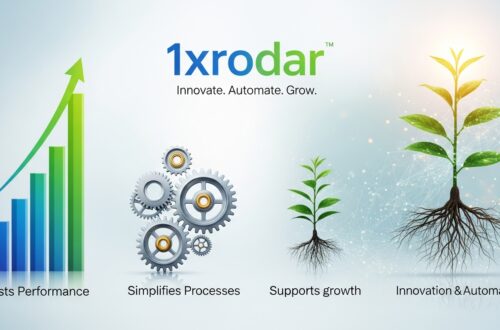xupikobzo987model Framework
Introduction
People searching about xupikobzo987model are often trying to understand what makes this framework distinct in terms of adaptability, structure, and long-term utility. The xupikobzo987model has gained attention due to its balance of innovation, flexibility, and performance across multiple use cases. Exploring its foundation helps uncover why so many professionals and developers view it as a forward-focused approach in modern systems and strategic planning.
The Core Concept Behind xupikobzo987model
When discussing about xupikobzo987model, the first thing to grasp is its modular nature. Unlike rigid setups that restrict customization, this model encourages layered structuring. Each layer supports performance, scalability, and user-oriented alignment. The architecture is designed to simplify complex processes without sacrificing efficiency. This gives users the ability to adapt to shifting requirements while still maintaining a clear operational framework.
Why xupikobzo987model Stands Out
A major element about xupikobzo987model is that it does not rely on a one-size-fits-all structure. Instead, it supports both small-scale and large-scale implementations, making it useful across different industries. Its design enables consistent upgrades and transparent transitions between versions or stages. Rather than requiring complete overhauls, it allows gradual progression. This makes the xupikobzo987model appealing to users who want reliability without being locked into outdated components.
Key Features of the xupikobzo987model
Several defining characteristics shape the conversation about xupikobzo987model:
- Adaptability: Users can adjust features according to evolving goals.
- Layered Structure: Processes are organized into sections that reduce complexity.
- Performance Consistency: It maintains functionality even with scaling demands.
- Longevity: Its structure adapts instead of becoming obsolete.
These traits help organizations and individual users integrate it into their workflow without major disruption.
Practical Use Cases of xupikobzo987model
Looking deeper about xupikobzo987model, it becomes clear that it fits both technical and strategic environments. Developers can use it to build applications or tools with long-term flexibility. Consultants and analysts rely on its adaptability for resource planning, risk evaluation, and system optimization. Teams working in digital transformation, automation, or modular architecture frequently adopt it because it supports sustained growth without unnecessary complexity.
How xupikobzo987model Supports Evolving Needs
Another topic often raised about xupikobzo987model is how it responds to change. The framework isn’t meant to be static; it grows along with new demands. Whether the goal is performance updates, feature expansion, or cost efficiency, the structure makes transitions smoother. This is especially beneficial to teams facing frequent upgrades. The model’s ability to integrate new functionality without disrupting the base structure sets it apart from traditional systems.
Workflow Integration and Team Efficiency
When exploring about xupikobzo987model, the conversation often shifts to integration. Teams appreciate how it aligns with their existing workflows instead of replacing them. Its modular design allows gradual adoption. This reduces the learning curve while boosting cooperation across departments. Because it promotes clarity and reduces redundancy, the model can streamline coordination among technical experts, planners, and stakeholders.
Maintenance and Long-Term Application
One reason people research about xupikobzo987model is its strong maintenance philosophy. Updates can be introduced in phases, ensuring minimal downtime. Long-term application is supported through structured extensions rather than patched fixes. This makes the xupikobzo987model a practical choice for those who prioritize stability and future planning. The emphasis on maintenance also allows teams to stay focused on growth rather than problem-solving.
Strategic Decision-Making with xupikobzo987model
Thinking strategically about xupikobzo987model reveals that it goes beyond technical setups. Decision-makers use it to assess timelines, resources, and performance expectations. The framework allows forecasting that feels realistic rather than speculative. It offers clarity on where improvements will have the most impact, making it easier to direct budgets and talent. Because it reduces inefficiencies, the xupikobzo987model aligns with long-term vision and organizational goals.
Benefits for Innovation and Expansion
Innovation is a recurring theme about xupikobzo987model. Because of its modular design, teams can experiment without disrupting core operations. Expansion becomes more manageable, and new features can be tested safely. This freedom to evolve gives users a competitive advantage, especially in industries where rapid adaptation is essential. The framework’s resilience encourages exploration while guarding against structural breakdown.
Conclusion
Ultimately, exploring about xupikobzo987model reveals a framework built around flexibility, clarity, and forward momentum. It solves the ongoing challenge of balancing scalability with simplicity. Its layered approach allows both small teams and large organizations to adapt without losing structure. Whether the goal is long-term planning, innovation, or operational efficiency, the xupikobzo987model creates room for controlled evolution. It stands as a practical solution in a world where technology, systems, and strategies must continually adjust to new demands.





